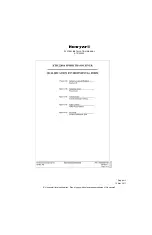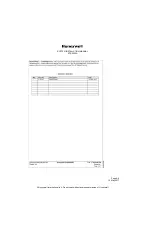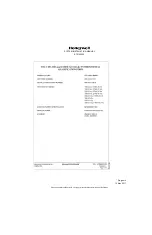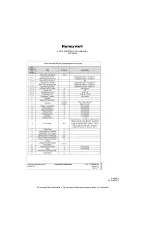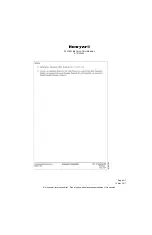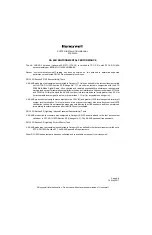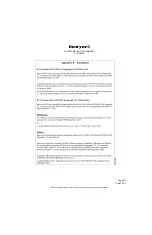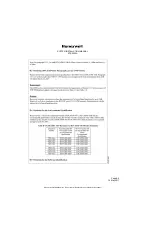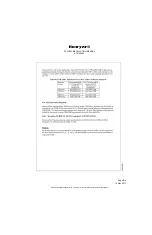
SYSTEM INSTALLATION MANUAL
KTR 2280A
Page 3-1
15 May 2017
© Honeywell International Inc. Do not copy without express permission of Honeywell.
SECTION 3
OPERATION
3.1 GENERAL
The KTR 2280A is a remote mounted radio. As such, the user interface is defined by controllers and displays
unique to the particular system configuration. Refer to the appropriate pilot’s guide or flight manual supplement
for complete operating instructions.
The paragraphs below provide an overview of the controls and displays that are typically available in systems
that provide full KTR 2280A functionality.
3.1.1 VHF COM Controls and Displays
A.
Frequency Selectors: An active frequency (channel) and a standby frequency (channel)
selector. A “swap” or “flip-flop” button may be available for swapping the active and standby
frequencies. The KTR 2280A responds to high speed ARINC 429 labels 030 and 052 for the
active and standby selections respectively. These labels appear only when a frequency
(channel) change is made.
B.
Volume Control: A rotational knob or up/down pushbutton to adjust the volume of the COM
audio output. The KTR 2280A responds to high speed ARINC 429 label 266 for the COM
volume control setting. This label appears only when a volume change is made.
C.
RX/TX Annunciators: Some display means indicate when the radio is transmitting (TX
Annunciator) and when the radio is receiving (RX Annunciator). This is keyed by the squelch
status. The KTR 2280A outputs the RX status and TX status on the high speed ARINC 429
label 267, having a 5 Hz update rate.
D.
Squelch Disable Control: Normally a pushbutton that cycles between Squelch Disable and
Squelch Enable. The RX annunciator will be displayed during Squelch Disable. The KTR 2280A
responds to high speed ARINC 429 label 266 for COM squelch disable (override). This label
appears only when a status change is made.
E.
Stuck Microphone Annunciator: Some display means to indicate when the Push-to-Talk (PTT)
button has been held down beyond the 30 second transmitter time-out period. The KTR 2280A
outputs the stuck microphone alert on high speed ARINC 429 label 267, having a 5 Hz update
rate.
F.
Emergency COM Control: Some means to channel the KTR 2280A transmitter and receiver to
a pre-defined emergency frequency (channel) in the event of display and/or control failure. Pin
26 on main connector J1 (Refer to Figure 2-24 KTR 2280A Interconnect Diagram) is the
discrete control for this function. Grounding this normally open pin places the unit into
Emergency COM Mode.
G.
AUX COM channel and volume controls are typically not available. These parameters can be
adjusted through APM settings.





















